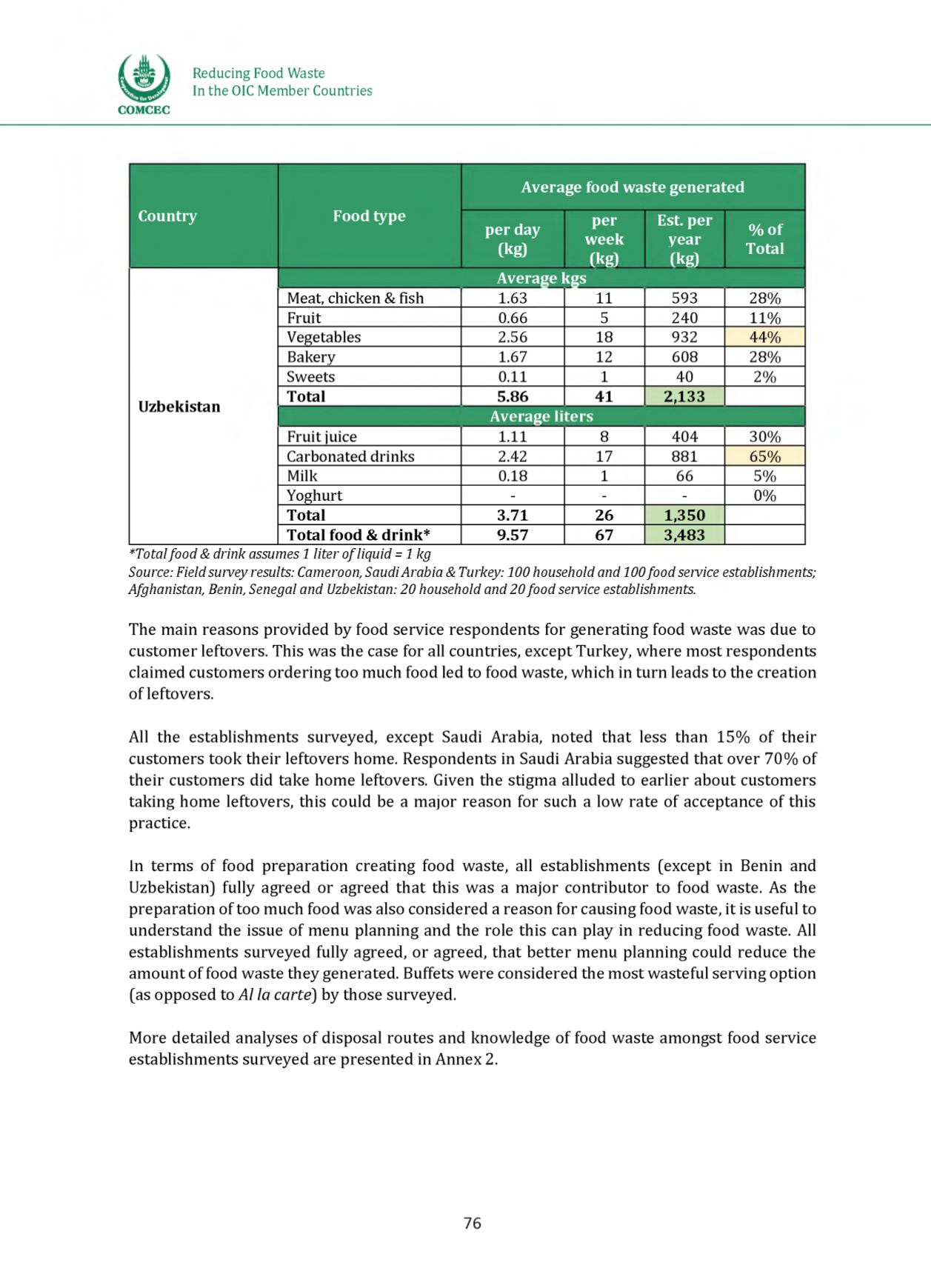

Reducing Food Waste
In the OIC Member Countries
COMCEC
Average food waste generated
Country
Food type
per day
(kg)
per
week
(kg)
Est. per
year
(kg)
% of
Total
Average kgs
Meat, chicken & fish
1.63
11
593
28%
Fruit
0.66
5
240
11%
Vegetables
2.56
18
932
44%
Bakery
1.67
12
608
28%
Sweets
0.11
1
40
2%
Uzbekistan
Total
5.86
41
2,133
Average liters
Fruit juice
1.11
8
404
30%
Carbonated drinks
2.42
17
881
65%
Milk
0.18
1
66
5%
Yoghurt
-
-
-
0%
Total
3.71
26
1,350
Total food & drink*
9.57
67
3,483
*Totalfood & drink assumes 1 liter o f liquid = 1 kg
Source: Field survey results: Cameroon, SaudiArabia & Turkey: 100 household and 100food service establishments;
Afghanistan, Benin, Senegal and Uzbekistan: 20 household and 20food service establishments.
The main reasons provided by food service respondents for generating food waste was due to
customer leftovers. This was the case for all countries, except Turkey, where most respondents
claimed customers ordering too much food led to food waste, which in turn leads to the creation
of leftovers.
All the establishments surveyed, except Saudi Arabia, noted that less than 15% of their
customers took their leftovers home. Respondents in Saudi Arabia suggested that over 70% of
their customers did take home leftovers. Given the stigma alluded to earlier about customers
taking home leftovers, this could be a major reason for such a low rate of acceptance of this
practice.
In terms of food preparation creating food waste, all establishments (except in Benin and
Uzbekistan) fully agreed or agreed that this was a major contributor to food waste. As the
preparation of too much food was also considered a reason for causing food waste, it is useful to
understand the issue of menu planning and the role this can play in reducing food waste. All
establishments surveyed fully agreed, or agreed, that better menu planning could reduce the
amount of food waste they generated. Buffets were considered the most wasteful serving option
(as opposed to
A l la carte)
by those surveyed.
More detailed analyses of disposal routes and knowledge of food waste amongst food service
establishments surveyed are presented in Annex 2.
76
















